Discover the Majestic Besakih Temple: The Largest Temple in Bali
Besakih Temple, often referred to as the "Mother Temple of Bali", is the largest and most important Hindu temple complex on the island. Nestled on the southwestern slopes of Mount Agung, Bali's highest volcano, the temple is not only a major religious site but also a cultural icon that draws visitors from around the world.
The temple complex is a sprawling collection of 23 separate but related temples, with Pura Penataran Agung being the most significant among them. Besakih Temple is revered as the holiest of all Balinese temples, serving as a pilgrimage site for the Balinese Hindu community. It stands as a testament to the rich spiritual traditions of Bali, blending majestic architecture with profound religious practices.
Located approximately 1,000 meters above sea level, the temple offers breathtaking views of the surrounding landscapes. The journey to Besakih is an experience in itself, as visitors ascend through lush terraced rice paddies and traditional Balinese villages, setting the stage for the spiritual encounter awaiting at the temple.
As a must-visit destination in Bali, Besakih Temple is not only a place of worship but also a cultural treasure that provides insight into Bali's unique blend of religion, art, and history. Whether you're a spiritual seeker or a curious traveler, a visit to Besakih Temple offers an enriching experience that connects you with the essence of Bali's cultural heritage.
Table of Contents
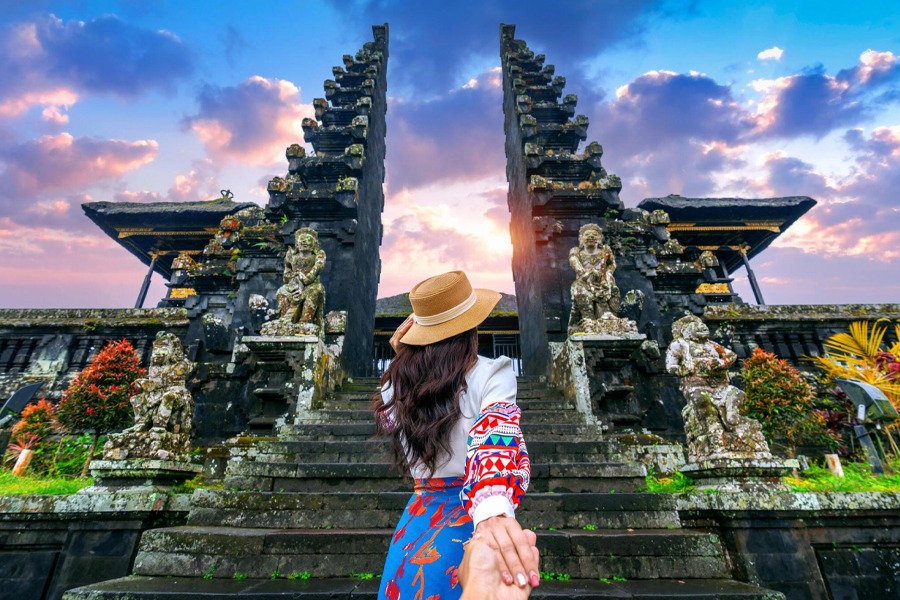
Entrance Fees
As of the most recent information in January 2025, the entry fee for Besakih Temple is IDR 150,000 per person for international visitors, which is approximately USD 10. This fee includes the rental of a sarong, a traditional garment that all visitors are required to wear as a sign of respect when entering the temple grounds.
The ticket also covers the services of a local tour guide and a one-time electric vehicle transfer service. Each visitor will be guided by a local tour guide while in the Sacred Area of Pura Agung Besakih.
If you arrive by your own vehicle, parking is available for IDR 10,000 for cars and IDR 5,000 for scooters. These fees ensure secure parking while you explore the temple complex. Please note: that all payments must be made in cash, as card payment options may not be available.
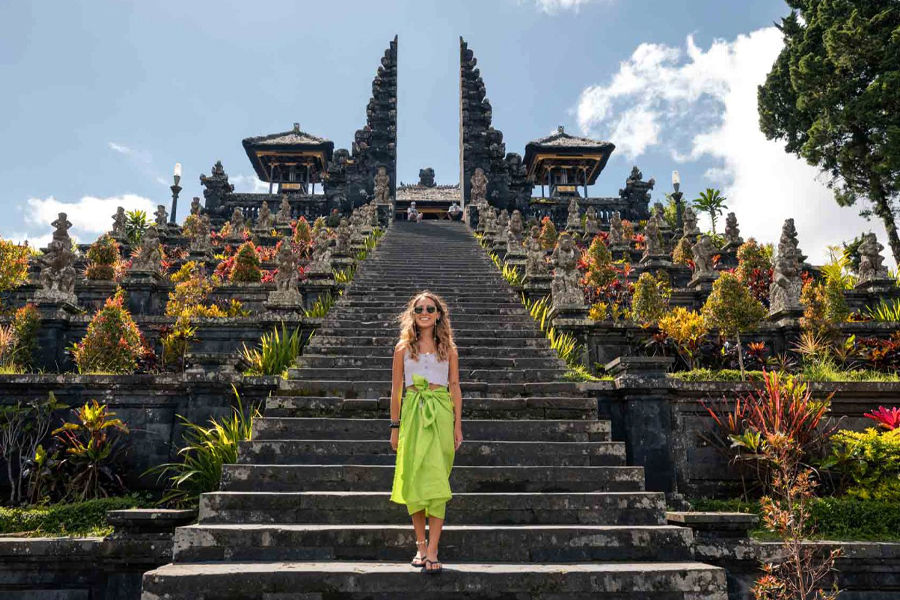
Address & Accessibility
Besakih Temple is beautifully situated on the slopes of Mount Agung in eastern Bali, within the village of Besakih. The address is: Besakih Temple, Besakih Village, Rendang District, Karangasem Regency, Bali, Indonesia.
Besakih Temple is accessible by road, making it an easy drive from many of Bali’s popular areas. If you're coming from Kuta or Seminyak, expect about a 2-hour journey, while it’s around 1.5 hours from Ubud. Public transportation options are limited, so renting a car, or hiring a local driver is your best bet.
The drive itself is a scenic experience, taking you through some of Bali’s lush landscapes. As you get closer to the temple, the roads may become a bit narrower and winding, adding to the sense of adventure. Starting your trip early in the day is a great idea to ensure you have plenty of time to explore the temple at your own pace. And here are the directions to Besakih from Google Maps:
How to Get There?
Reaching Besakih Temple is relatively straightforward, and there are several options depending on your preference and location in Bali:
By Car:The most convenient way to get to Besakih Temple is by car. If you're staying in tourist areas like Kuta, Seminyak, or Ubud, you can rent a car and drive yourself. The roads are well-maintained, and the drive offers beautiful views of Bali’s countryside. However, be prepared for some narrow and winding roads as you approach the temple.
By Taxi: You can also take a taxi or use ride-hailing apps like Grab or Gojek to get to Besakih Temple. While this option is convenient, it may be more expensive compared to renting a car, especially if you're traveling from farther away.
By Scooter: For the more adventurous, renting a scooter is a budget-friendly way to get to Besakih Temple. This option allows for flexibility and the chance to explore Bali at your own pace. Keep in mind that the roads can be challenging, especially near the temple, so make sure you're comfortable with scooter riding and wear appropriate safety gear.
Recommendations: For a budget-friendly and well-organized tour option, consider Bali Cheapest Tours. We offer guided tours to Besakih Temple with experienced English-speaking guides who can share their knowledge of Balinese culture and traditions. Here are some day tours to consider:
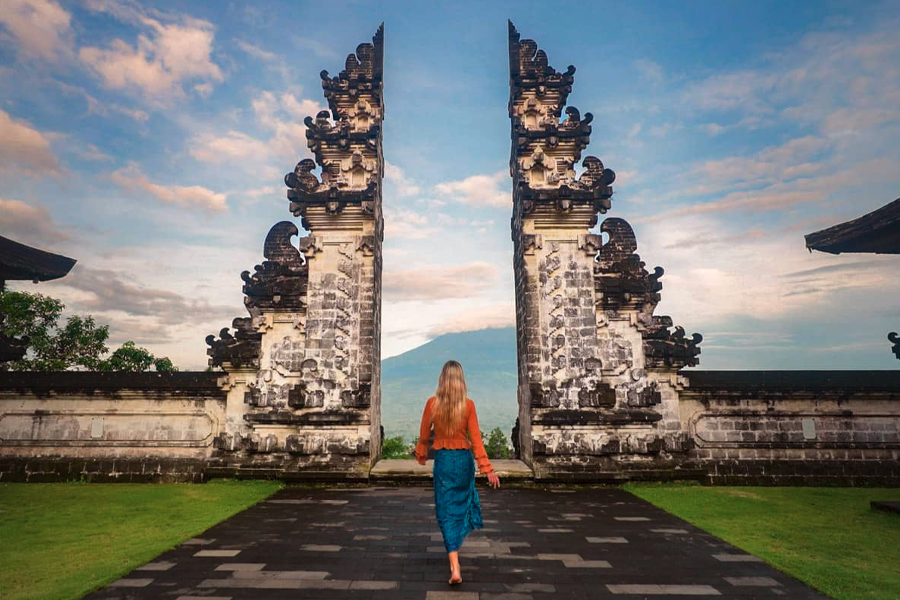
Besakih Temple, Lempuyang, and Tirta Gangga Private Day Tour
★ ★ ★ ★ ★ (824 Reviews)
Discover East Bali’s enchanting beauty on a Private Day Tour, blending iconic sites like Besakih Temple and Lempuyang Temple with serene spots such as Tirta Gangga Water Palace. Enjoy personalized service, rich cultural insights, and stunning landscapes in one unforgettable experience. See Details
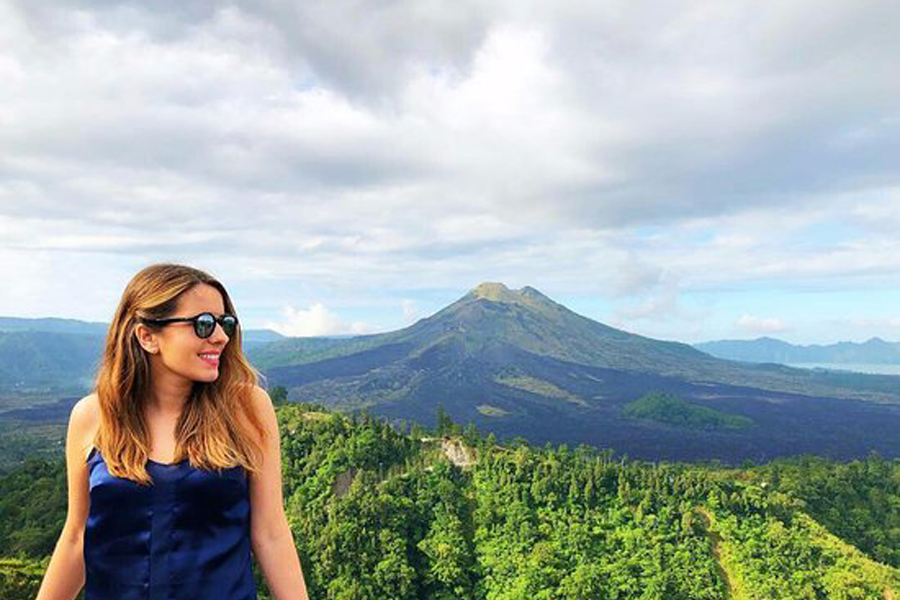
Tegenungan Waterfall, Kintamani Volcano, and Besakih Temple
★ ★ ★ ★ ★ (834 Reviews)
Experience Bali's enchanting beauty on a private day tour featuring Tegenungan Waterfall, Kintamani Volcano, and Besakih Temple. This exclusive journey offers personalized exploration of stunning landscapes, vibrant cultural performances, and sacred sites, blending adventure and tranquility. See Details
Opening Hours
Besakih Temple is open to visitors from 8:00 AM to 5:00 PM daily. However, the temple's sacred areas are accessible 24 hours a day for prayer and religious activities. This extended access allows devotees to engage in spiritual practices and ceremonies at any time, reflecting the temple's role as a central place of worship for the Balinese Hindu community.
For those visiting for tourism, it is recommended to arrive during the standard visiting hours to ensure you have ample time to explore the temple complex and its key attractions. Be aware that the temple may be particularly busy during major Hindu festivals or ceremonies, and certain areas might be reserved for worshippers during these times.
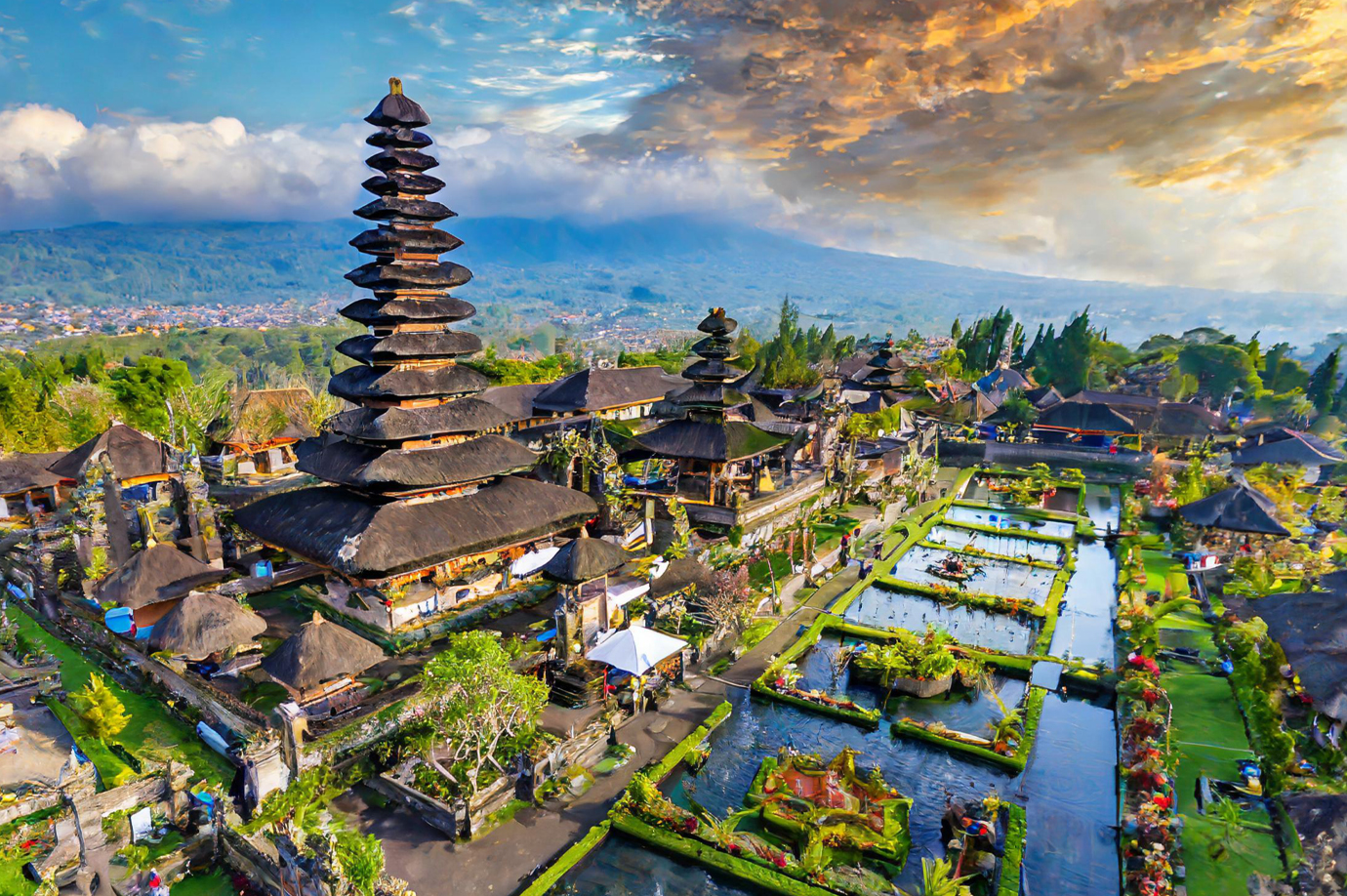
Best Time to Visit
The best time to visit Besakih Temple can really enhance your experience. Here’s a quick guide to help you decide when to go:
Weather Considerations
- Dry Season (April to October): This is generally the best time to visit. The weather is sunny and pleasant, with less rain, making it easier to explore the temple and enjoy the stunning views. It’s a great time to experience the beauty of the temple complex and the surrounding landscapes without the hassle of rain.
- Rainy Season (November to March): While the rainy season can bring lush greenery and a fresh atmosphere, it also means more frequent showers and higher humidity. If you don’t mind the rain and want to see the temple in a different light, this can be a unique time to visit. Just be prepared for occasional downpours and muddy paths.
Avoiding the Crowds
- Weekdays: If you prefer a quieter visit, try to go on a weekday. Weekends tend to be busier with more tourists and locals visiting for various activities.
- Early Morning or Late Afternoon: Arriving early or later in the day can help you avoid the peak crowds. The early morning light is also great for photos, and the cooler temperatures make exploring more comfortable.
Special Events and Festivals
- Hindu Festivals: Besakih Temple is the center of several important Hindu festivals, like Galungan and Kuningan. These events are vibrant and full of cultural significance, providing a unique opportunity to see traditional ceremonies. However, they can be quite crowded, so if you’re looking to avoid the hustle and bustle, you might want to plan your visit for a different time.
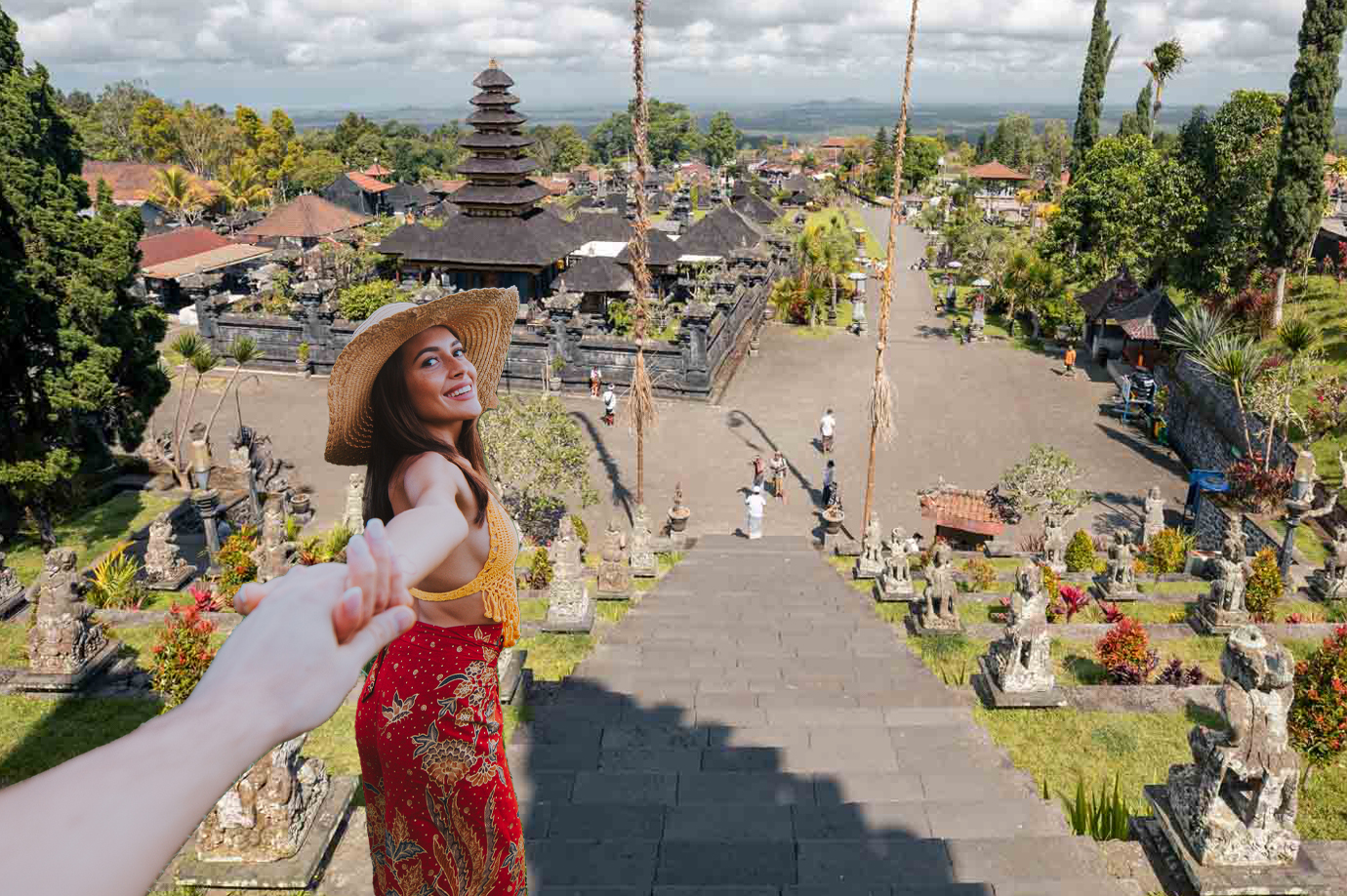
What To See and Do
Besakih Temple offers a rich experience beyond its spiritual significance. Here’s what you can do during your visit:
- Explore the Temple Complex: Wander through the sprawling temple grounds and discover the majestic Pura Penataran Agung along with the many smaller temples. Each temple has unique architectural features and intricate carvings that highlight the artistry of Balinese craftsmanship.
- Photography: Capture stunning views of Besakih Temple against the backdrop of Mount Agung. The temple’s intricate details and the surrounding lush landscapes provide excellent photo opportunities, especially in the soft light of early morning or late afternoon.
- Participate in Ceremonies: If your visit aligns with a Hindu festival or ceremony, take the chance to witness or participate in traditional rituals. These ceremonies offer a vibrant and immersive way to experience Balinese spiritual practices.
- Enjoy the Scenery: Take in the panoramic views of the surrounding countryside and Mount Agung. The temple’s location on the slopes of the volcano provides breathtaking vistas that are perfect for relaxation and contemplation.
- Engage with Locals: Interact with local worshippers and visitors to gain deeper insights into the cultural and spiritual significance of Besakih Temple. Respectful conversations can enrich your understanding of Balinese Hinduism and its practices.
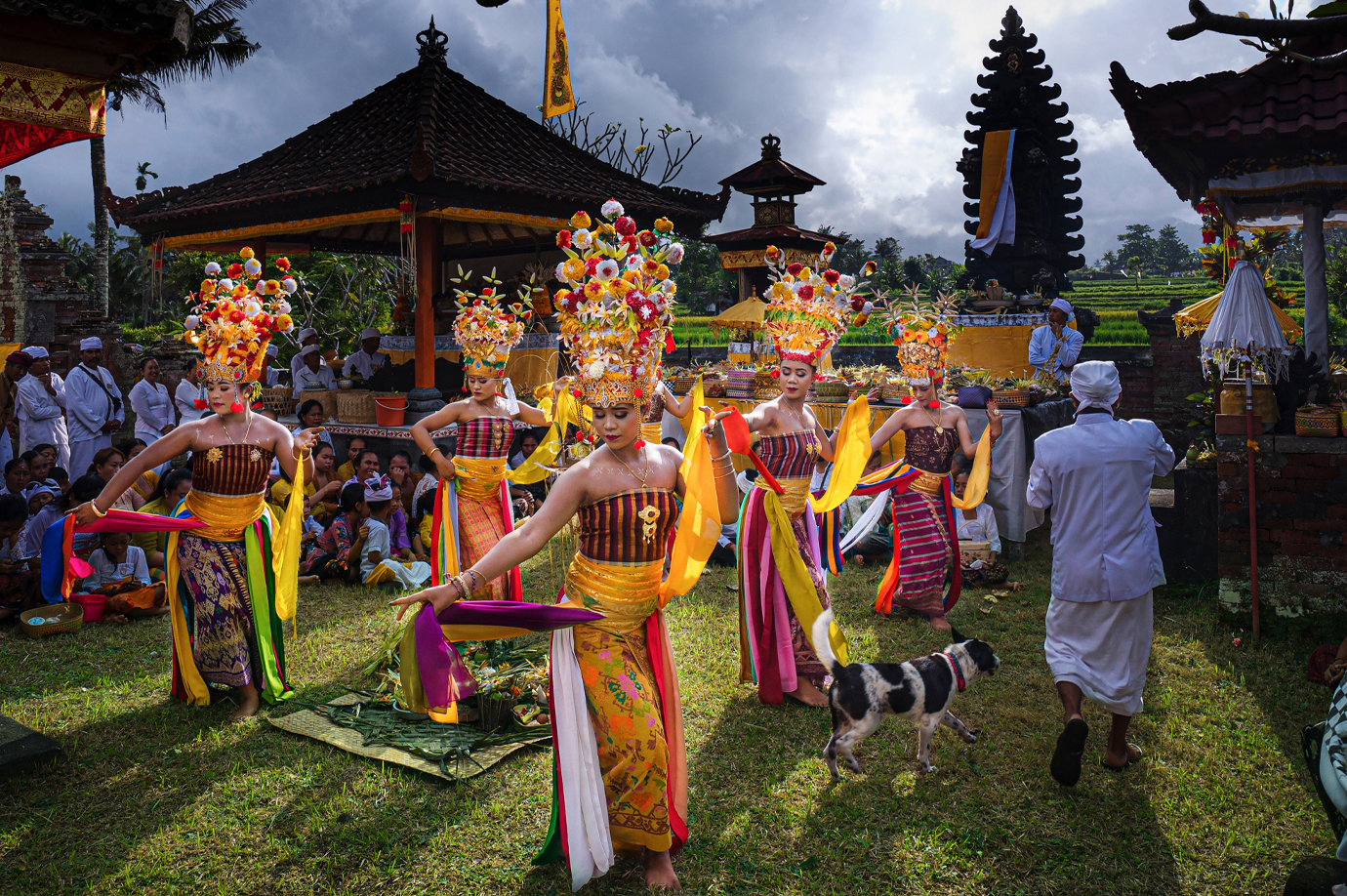
Nearby Best Hotels
For a comfortable and convenient stay near Besakih Temple, consider these top hotels. Each offers unique amenities and is well-situated for exploring the temple and surrounding areas:
- Besakih Homestay & Villa: Located just a short drive from Besakih Temple, this homestay offers a cozy and authentic Balinese experience. Enjoy comfortable accommodations, local cuisine, and warm hospitality in a peaceful setting.
- Manik Villa Besakih: This villa provides a tranquil retreat with beautiful views of the surrounding landscape. Guests can enjoy private villas with modern amenities, a relaxing atmosphere, and easy access to local attractions.
- Villa & Home Stay Kubu Alit Besakih: Offering a combination of traditional and contemporary comforts, this villa and home stay is perfect for travelers seeking a blend of local charm and modern convenience. The property features spacious rooms, beautiful gardens, and a friendly atmosphere.
- Candra Homestay Besakih: Experience genuine Balinese hospitality at this homestay, which offers a welcoming environment and personalized service. Enjoy comfortable rooms, home-cooked meals, and easy access to Besakih Temple.
- Mahagiri Resort & Restaurant: Known for its excellent service and beautiful location, Mahagiri Resort provides luxurious accommodations with stunning views of Mount Agung. The resort features a restaurant serving local and international dishes, an infinity pool, and a range of amenities for a relaxing stay.
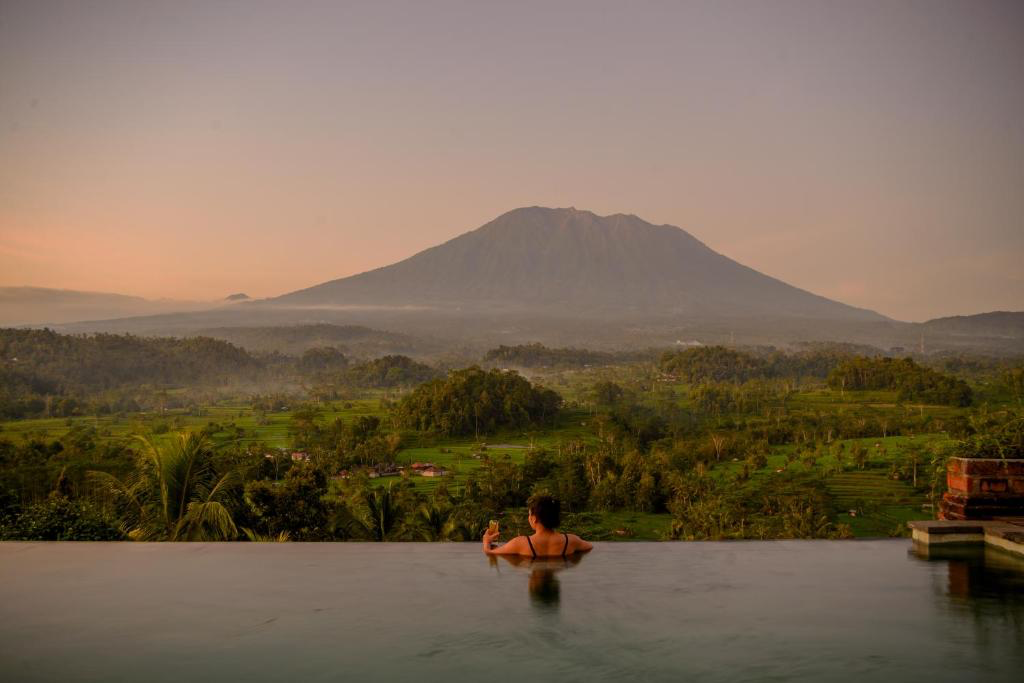
Nearby Best Restaurants
After exploring Besakih Temple, you can enjoy a delicious meal at one of these top nearby restaurants. Each offers a unique dining experience with a range of local and international flavors:
- Warung Makan Besakih: Located close to the temple, Warung Makan Besakih offers a variety of traditional Balinese dishes in a casual, family-friendly setting. Enjoy authentic flavors and local specialties prepared with fresh ingredients.
- Warung Bambu Indah: Offering a unique dining experience amidst lush greenery, Warung Bambu Indah serves a variety of Balinese and Indonesian dishes. The restaurant’s natural setting and eco-friendly approach make it a pleasant spot for a meal.
- The Lotus Restaurant: Known for its beautiful garden setting and diverse menu, The Lotus Restaurant provides both local and international dishes. It’s an ideal place for a relaxed meal with a view of the surrounding landscape.
- Mahagiri Restaurant: Located within the Mahagiri Resort, this restaurant offers a refined dining experience with a menu that includes both local and international cuisine. Enjoy a meal with spectacular views of Mount Agung and the surrounding area.
Nearby Attractions
Enhance your visit to Besakih Temple by exploring these nearby attractions. Each site offers a unique experience that complements your journey:
- Tirta Empul Temple: Renowned for its holy spring water, Tirta Empul Temple provides a chance to witness traditional purification rituals. The temple is set in a lush environment, offering a tranquil experience.
- Sidemen Valley: Known for its picturesque landscapes and rich Balinese culture, Sidemen Valley is ideal for trekking, exploring rice fields, and engaging with local crafts and traditions.
- Goa Lawah Temple: Famous for its bat-filled caves, Goa Lawah Temple offers a unique glimpse into Balinese Hindu rituals and is an important site for religious ceremonies.
- Kintamani Highland: Located nearby, Kintamani provides stunning views of the volcanic landscape and Lake Batur. It’s perfect for scenic drives, photography, and enjoying local culinary delights.
- Tukad Cepung Waterfall: A hidden gem, Tukad Cepung Waterfall is renowned for its enchanting beauty and unique setting. Nestled within a cave, the waterfall offers a magical experience with light beams streaming through the cave entrance.
- Kerta Gosa: Kerta Gosa is a historical site featuring an ancient court of justice and beautiful Kamasan-style paintings on its ceilings. It provides a fascinating insight into Balinese art and history.
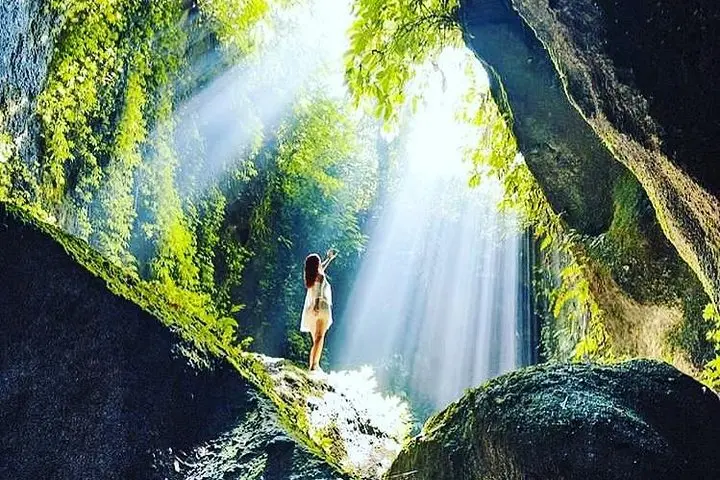
Brief History of Besakih Temple
The history of Besakih dates back to prehistoric times when it was a sacred site for the indigenous Balinese people, who practiced animism and worshipped natural elements. With the introduction of Hinduism to Bali around the 8th century, Besakih began its transformation into a Hindu temple complex. The central temple, Pura Penataran Agung, is dedicated to the Trimurti—the Hindu trinity of Brahma (the Creator), Vishnu (the Preserver), and Shiva (the Destroyer). This reflects the Balinese belief in the harmonious balance of cosmic forces, which is central to their religious practices.
Besakih's significance grew exponentially during the 14th century, under the influence of the Majapahit Empire, which was instrumental in shaping Bali's Hindu culture. The temple complex was expanded and became the heart of religious life on the island. It played a crucial role in unifying various sects of Balinese Hinduism, serving as a pilgrimage site where people from all over Bali would gather for major religious festivals and ceremonies.
Despite its historical and spiritual importance, Besakih has faced numerous challenges over the centuries. One of the most dramatic events was the eruption of Mount Agung in 1963, which caused widespread devastation across the island. Remarkably, the lava flows narrowly missed the temple complex, which was seen as a miraculous sign of the temple's divine protection. This event further cemented Besakih's status as a powerful spiritual symbol for the Balinese people.
Today, Besakih remains a vital center of worship and pilgrimage. The temple complex comprises 23 separate but related temples, with Pura Penataran Agung at its core. Each temple has its own function and significance, reflecting the complex nature of Balinese Hinduism, where deities, ancestors, and natural forces are intricately intertwined. Besakih is not just a historical site but a living embodiment of Bali's spiritual heritage, attracting both pilgrims and visitors who seek to connect with the island's rich cultural and religious traditions.
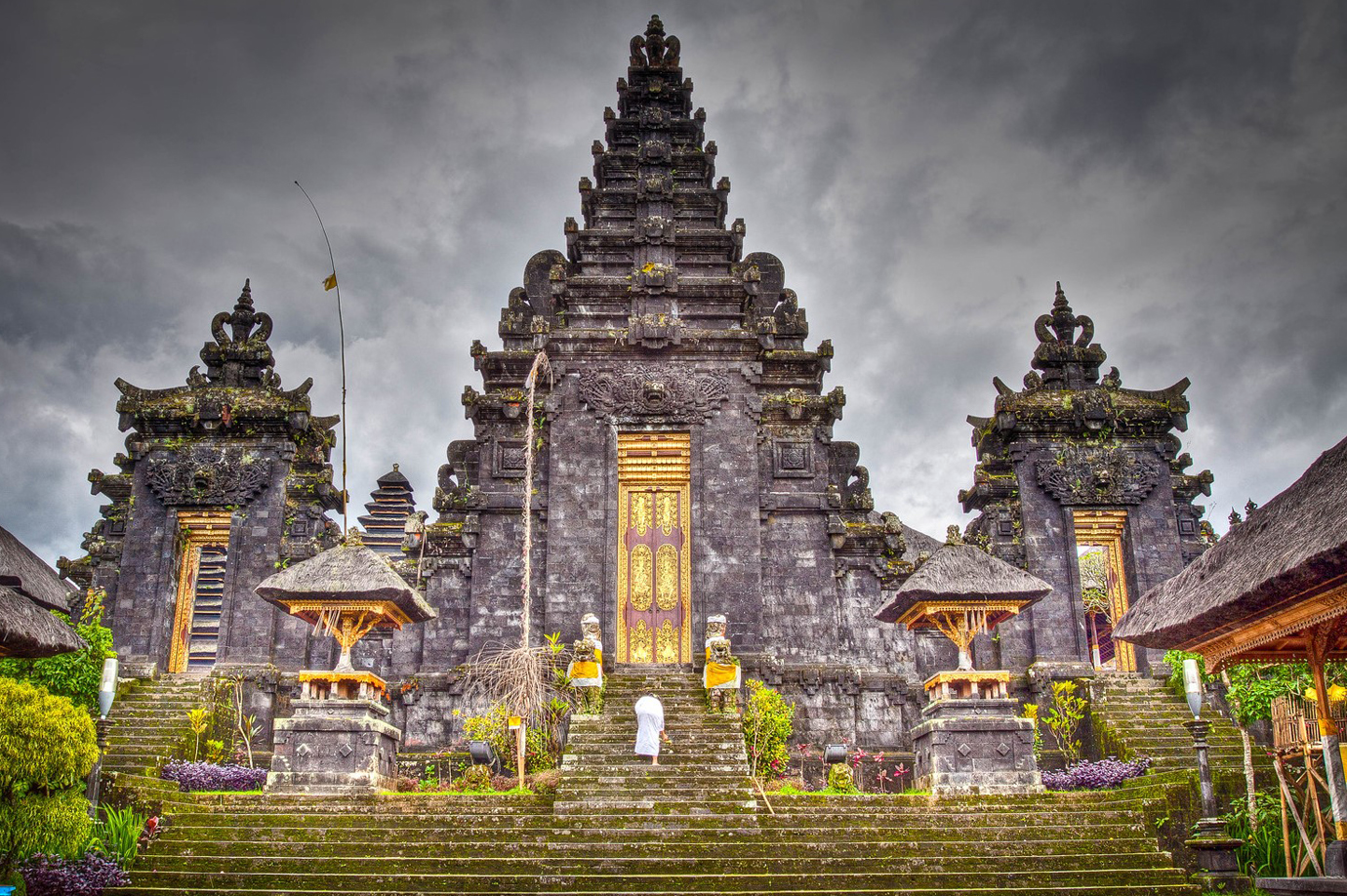
Cultural Significance
Besakih Temple is not only the largest and holiest temple complex in Bali but also a cornerstone of the island's cultural identity. Its status as the "Mother Temple" underlines its importance in the religious and cultural life of the Balinese people. As a central place of worship, Besakih plays a pivotal role in the observance of Balinese Hindu rituals, which are deeply intertwined with the island's social and cultural fabric.
The temple complex is an embodiment of the Balinese concept of 'Tri Hita Karana,' which translates to the three causes of well-being: harmony with God, harmony among people, and harmony with nature. This philosophy is evident in the way the temple is integrated into the natural landscape of Mount Agung, Bali's most sacred volcano. The alignment of the temples with the natural environment symbolizes the Balinese commitment to maintaining cosmic balance and reflects the broader cultural values of respect for nature and spirituality.
Besakih is also a center for major religious ceremonies, including the Eka Dasa Rudra, a grand purification ritual that occurs once every century. These ceremonies not only reinforce the spiritual connection of the Balinese people with their gods but also serve as a means of cultural preservation, passing down traditions, values, and knowledge from one generation to the next. The temple complex, with its intricate architecture, sacred rituals, and cultural festivals, stands as a living museum of Balinese heritage, offering a glimpse into the island's rich spiritual and cultural traditions.
The temple's cultural significance extends beyond Bali, as it attracts pilgrims and visitors from around the world. Through its rituals, architecture, and serene environment, Besakih fosters a deeper understanding and appreciation of Balinese culture and spirituality, making it a vital cultural landmark not just for the island, but for the global community as well.
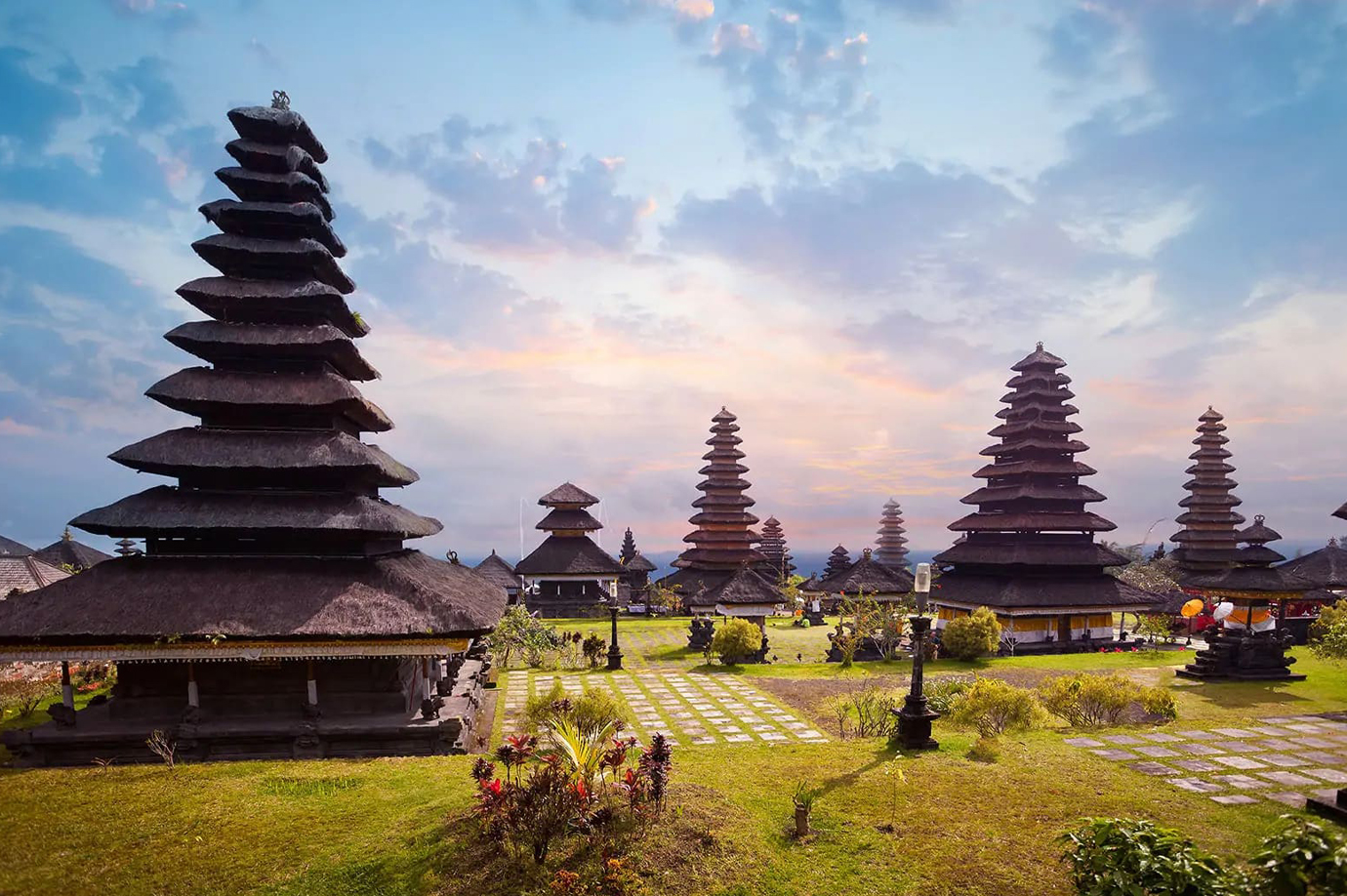
Architecture & Design
Besakih Temple's architecture and design are a reflection of Bali's rich cultural heritage and its profound spiritual beliefs. The temple complex, situated on the slopes of Mount Agung, is designed to blend harmoniously with the natural landscape, embodying the Balinese philosophy of 'Tri Hita Karana,' which emphasizes the interconnectedness of the divine, nature, and humanity.
The layout of Besakih is centered around a series of terraces that ascend towards Mount Agung, with each terrace representing a higher level of spiritual elevation. The main temple, Pura Penataran Agung, sits at the heart of the complex and is characterized by its tiered structure, or 'meru,' which symbolizes Mount Meru, the sacred mountain in Hindu, Buddhist, and Jain cosmology. This design not only reflects the Balinese reverence for mountains as sacred spaces but also serves as a physical manifestation of the spiritual journey towards enlightenment.
Comprising 23 separate but related temples, Besakih's architecture features traditional Balinese elements such as 'candi bentar' (split gates), 'padmasana' (lotus thrones), and intricately carved stone sculptures that depict scenes from Hindu mythology. These elements are crafted with meticulous attention to detail, showcasing the high level of artistry and craftsmanship that is characteristic of Balinese temple architecture.
Another significant aspect of Besakih's design is its symbolic representation of the Hindu concept of the macrocosm and microcosm. The temple complex is arranged in a way that mirrors the universe, with the central sanctuary representing the center of the world and the outer temples symbolizing the different directions and elements. This architectural symbolism is integral to the temple's role as a spiritual hub, where the physical and metaphysical realms converge.
The architecture and design of Besakih Temple are not only a testament to the island's architectural ingenuity but also serve as a living reminder of Bali's spiritual and cultural continuity. The temple's timeless design, coupled with its sacred function, makes it a masterpiece of Balinese architecture that continues to inspire and awe both worshippers and visitors alike.
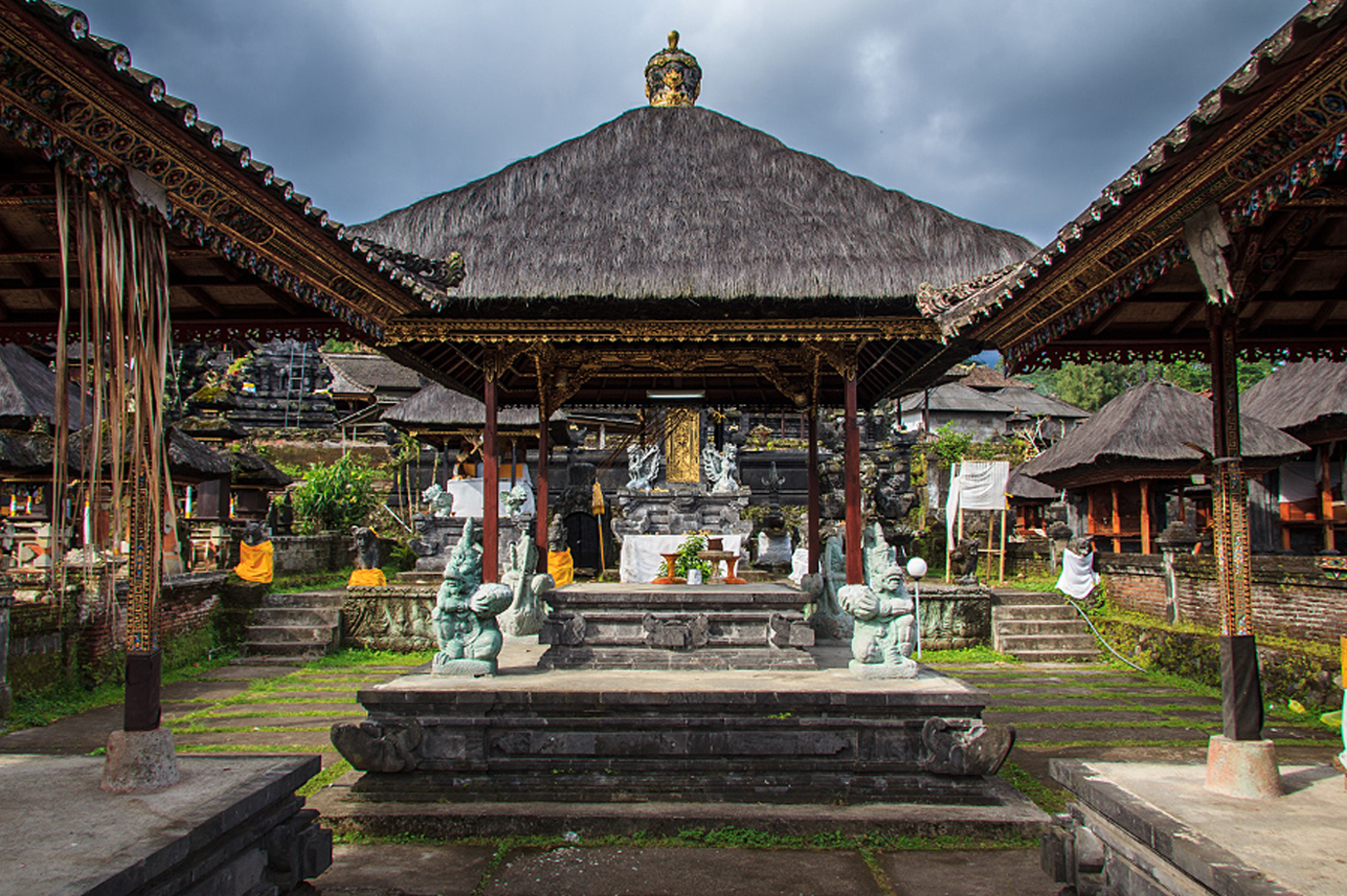
Mythology & Legends
Besakih Temple is steeped in rich mythology and legends that contribute to its profound spiritual significance. Among these is the legend of Naga Besukih, a mythical dragon or serpent believed to reside within the depths of Mount Agung, the sacred volcano that forms the backdrop of the temple complex. Naga Besukih is considered the guardian spirit of Besakih Temple, watching over the temple and the surrounding lands.
The Naga Besukih is not just a protector; it is also associated with water, an element crucial to Bali's agricultural success and the well-being of its people. In Balinese Hinduism, dragons and serpents like Naga Besukih are seen as powerful, benevolent beings that help maintain the balance of the natural world. The presence of Naga Besukih is believed to ensure that the island remains fertile and its inhabitants prosperous, symbolizing the connection between the spiritual and natural realms.
According to local beliefs, the Naga Besukih is honored during specific temple ceremonies, where offerings are made to acknowledge its role as the temple's protector. This practice reflects the broader Balinese philosophy of harmony between humans, nature, and the divine. The dragon's guardianship is seen as a vital force that safeguards the temple from harm, particularly during times of natural calamities such as volcanic eruptions.
Additionally, the legend of Naga Besukih is intertwined with other important myths related to Besakih, such as the story of Rsi Markandeya, the Hindu sage who is said to have established the temple after receiving a divine vision. Together, these legends underscore the temple's status as a sacred site where the material and spiritual worlds converge. The mythology surrounding Besakih Temple, including the story of Naga Besukih, adds depth to the cultural and religious practices that have been carried out at this sacred site for centuries.
These myths and legends are not merely historical tales; they are living traditions that continue to shape the spiritual and cultural landscape of Bali. Through its mythology, Besakih Temple remains a place of deep reverence, where the Balinese people maintain a strong connection with their gods, their ancestors, and the natural world around them.
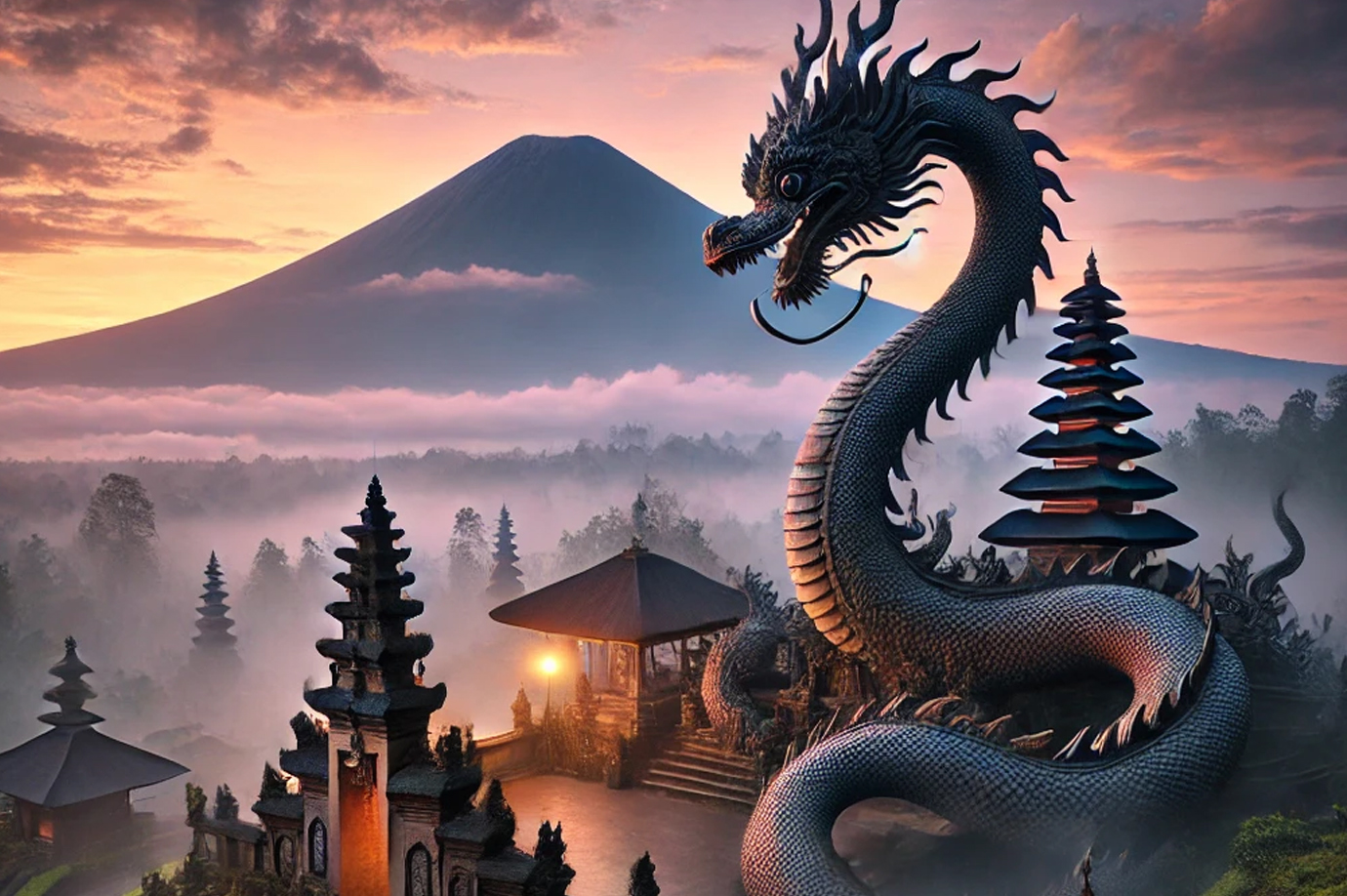
Why Must-Visit Temple?
Deep Spiritual Significance: Besakih is at the heart of Balinese Hinduism. It's the largest and most important temple on the island, where major ceremonies and pilgrimages take place. When you visit, you're stepping into a living, breathing center of faith that's been vital to the Balinese people for centuries. It’s not just about seeing a temple—it's about feeling the spiritual energy that flows through this sacred place.
Architectural Beauty: The temple complex is a stunning example of Balinese architecture. The intricate carvings, tiered shrines, and beautifully designed gateways all harmonize with the natural landscape, especially with the backdrop of Mount Agung, Bali's most sacred volcano. Walking through Besakih, you'll be amazed at the craftsmanship and the deep thought put into aligning the temple with its surroundings.
Cultural Experience: Visiting Besakih isn't just about sightseeing—it's about diving into Balinese culture. The temple is alive with rituals, offerings, and ceremonies, especially during festivals. This is a place where you can truly witness Balinese traditions in action, from the vibrant processions to the sounds of traditional music. It’s an experience that brings you closer to the heart of Bali’s cultural heritage.
Historical Connection: Besakih has stood the test of time. It has been a place of worship for over a thousand years, surviving volcanic eruptions and changes in the world around it. The temple’s history is woven into the history of Bali itself, making it a powerful symbol of resilience and faith. When you visit, you're not just seeing a historical site—you're connecting with the deep roots of Balinese history.
Natural Splendor: The location of Besakih Temple adds another layer to its appeal. Set on the slopes of Mount Agung, the temple offers breathtaking views of the surrounding landscape. The combination of spiritual atmosphere and natural beauty makes it a place of serenity and awe. Whether you're a nature lover or a spiritual seeker, the setting of Besakih Temple will leave a lasting impression.
Simply put, Besakih Temple is a place where Bali's spirituality, culture, history, and natural beauty all come together. It’s a place that invites you to look deeper, to experience more, and to connect with the essence of what makes Bali special. If you're visiting the island, Besakih Temple isn't just another stop—it's an unforgettable journey into the heart of Bali.
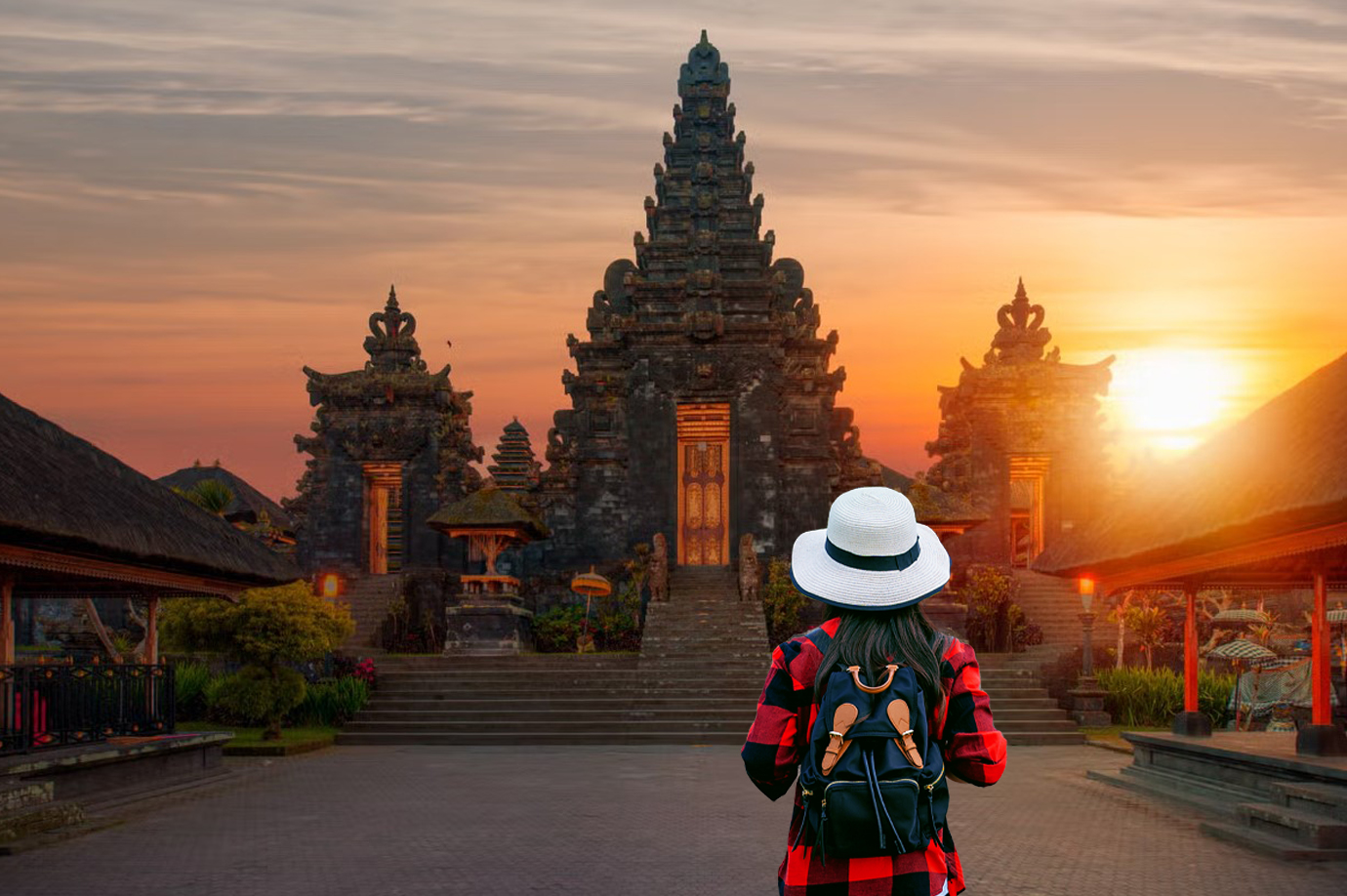
Know Before You Go
Visiting Besakih Temple, the "Mother Temple" of Bali, is a unique cultural and spiritual experience. To make the most of your visit, it’s important to be aware of a few key details before you go. As a sacred site, Besakih Temple has certain customs and regulations that visitors are expected to follow, ensuring respect for the religious practices and traditions of the Balinese people.
- Dress Code: Visitors are required to dress modestly when visiting the temple. This means wearing clothing that covers the shoulders and knees. Sarongs and sashes, which can be rented or purchased at the entrance, are mandatory for all visitors, regardless of gender, to show respect for the sacred space.
- Temple Etiquette: Besakih is an active place of worship, and it’s important to observe proper etiquette. Visitors should refrain from standing directly in front of people who are praying, and it’s essential to avoid pointing your feet at the temple shrines, as this is considered disrespectful. Additionally, women who are menstruating are traditionally not allowed to enter the temple, in accordance with Balinese Hindu beliefs.
- Guided Tours: While it’s possible to explore Besakih on your own, hiring a local guide can greatly enhance your experience. Guides can provide valuable insights into the temple’s history, architecture, and spiritual significance, making your visit more meaningful. Be sure to negotiate the price before the tour begins, as costs can vary.
- Best Time to Visit: The best time to visit Besakih Temple is during the morning or late afternoon, when the temple is less crowded and the weather is cooler. The temple is open to visitors all year round, but it’s especially vibrant during religious ceremonies, which offer a unique glimpse into Balinese culture and traditions.
- Accessibility: The temple complex is located on the slopes of Mount Agung, and some areas require climbing steep steps. While the site is generally accessible, those with mobility issues may find certain sections challenging. Comfortable footwear is recommended to navigate the temple grounds.
- Entry Fees: An entry fee is required to visit Besakih Temple. As of the latest update, the fee is IDR 150,000 for adults. This fee includes a sarong rental. There are additional charges for parking: IDR 10,000 for cars and IDR 5,000 for scooters. These fees help maintain the temple and support local communities.
- Respectful Photography: Photography is allowed in most areas of the temple, but visitors should be mindful not to disrupt prayer sessions or ceremonies. It’s also important to ask for permission before photographing locals, especially during religious activities.
- Local Customs: Engaging with the local community in a respectful manner is key to a positive experience. Learning a few basic phrases in Bahasa Indonesia or Balinese can go a long way in showing respect and appreciation for the culture.
By keeping these guidelines in mind, your visit to Besakih Temple will be a respectful and enriching experience, allowing you to fully appreciate the spiritual and cultural significance of this extraordinary site.
Besakih Temple FAQs
Q: What is Besakih Temple?
A: Besakih Temple, also known as the "Mother Temple of Bali," is the largest and holiest temple complex in Bali, Indonesia. Located on the slopes of Mount Agung, it is a significant spiritual center for the Balinese people.
Q: Where is Besakih Temple located?
A: Besakih Temple is located on the eastern side of Bali, on the slopes of **Mount Agung**, Bali's highest volcano. It is in the **Karangasem** regency, about 1.5 to 2 hours' drive from Ubud.
Read MoreAuthor
This guide to Besakih Temple by Bali Cheapest Tours, dedicated to showcasing the serene beauty and spiritual essence of Bali's hidden treasures.
From the serene temple grounds to the lush surroundings, Besakih Temple offers a unique blend of spirituality, culture, and nature, providing an unforgettable experience for all visitors.
Planning Your Bali Trip?
Allow our team to create an unforgettable Balinese experience for you. Please contact us today! We offer a variety of package options to suit your needs.
Let us help you create your dream Bali journey—contact us today! We offer a variety of packages to match your interests and budget!
